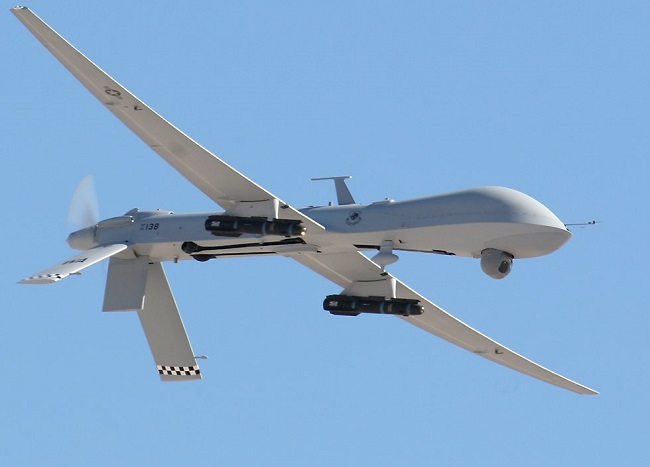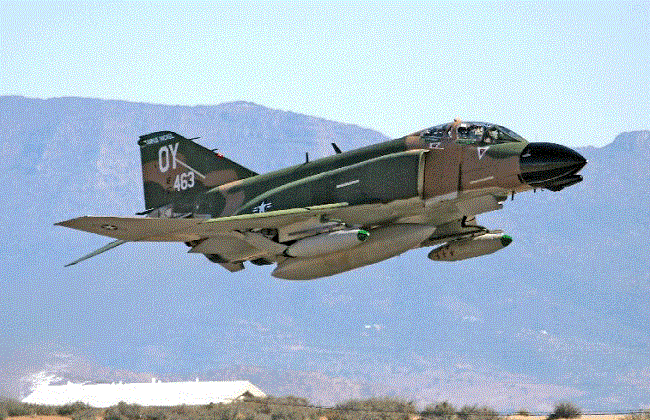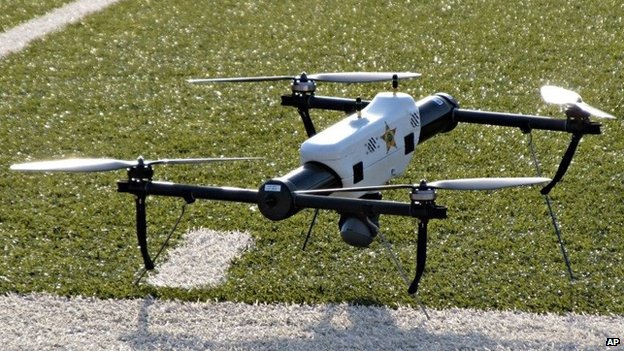
Speaking at a drone conference in San Francisco earlier this month, Jim Williams, head of the unmanned-aircraft office at the Federal Aviation Administration, revealed that a U.S. commercial airliner nearly collided with a drone in Florida airspace back on March 22, 2014. The growing number of unmanned aerial vehicles taking to the sky in recent years highlights potential dangers, urging the FAA to step up its regulatory efforts.
Williams disclosed that a pilot of an American Airlines Group Inc. regional jet came dangerously close to what he described as a “small remotely piloted aircraft” resembling a “camouflaged F-4 fixed-wing aircraft” over the skies of Tallahassee Regional Airport in Florida, en route from Charlotte, NC. The drone was coming so close to his jet that he feared a collision was imminent.

Above: A real-life camouflaged F-4 fixed-wing aircraft
No actual damage was found once the airline was inspected, but catastrophic results would have ensued had either of the two jet engines swallowed the drone. Recall that in 2009, US Airways Flight 1549 was forced into an emergency landing on the Hudson River of New York after a flock of birds was sucked up in one of the engines. Williams pointed out that if a drone with its metal-and-plastic chassis and big lithium battery were to be caught in turbine engine, then the flight might not be so lucky to have an emergency landing.
The FAA was unable to identify the drone’s owner in the investigation that followed, citing it’s unsure whether it belonged to a government or civilian group. Although this was the first reported incident of a near collision with a commercial airliner, an Alitalia aircraft approaching John F. Kennedy Airport in New York identified a drone within 200 feet of its descent a year before, in March 2013.
Regulations
On a national level, the FAA’s regulations are largely loose and unenforced, permitting recreational drone flight up to 400 feet of altitude without any restrictions on model type. Public entities such as police departments face slightly heftier regulations, requiring that they obtain a special permit prior to using a drone; hobbyists are exempt from this rule. However, all drone pilots are required to alert airport operators when flying within five miles (eight kilometers) of an airport.

Police-owned quadcopter
The lack of federal oversight has caused local governments and law enforcement agencies to take their active measures. A man was charged with a felony for flying his drone over the scene of a vehicular accident in April. Meanwhile a rural town outside of Denver, CO, proposed placing a $100 bounty on the remains of any drone shot down over its airspace.
The price decline in drones over the last decade has seen the number of drones in U.S. airspace radically increase. Without a concrete set of regulations, there’s nothing to stop anyone from using these devices to wreak havoc if so inclined. Do we really want a few bad apples spoiling what could be the next American pastime?
Advertisement
Learn more about Electronic Products Magazine





